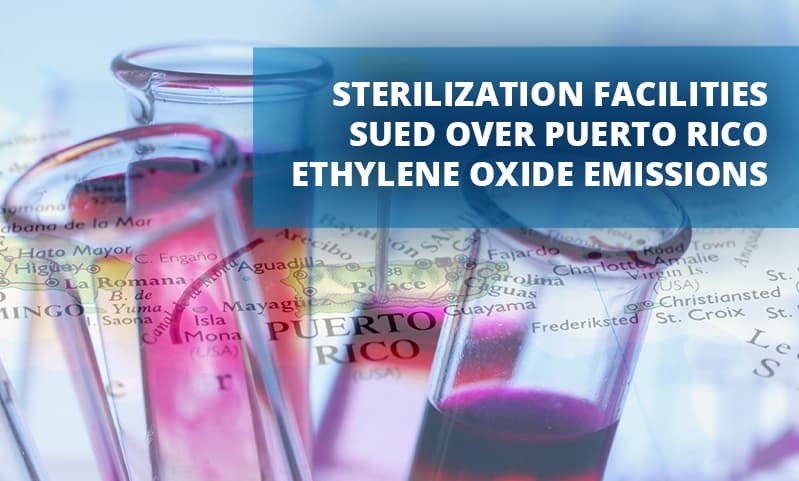Attorneys for Napoli Shkolnik along with Milberg Coleman Bryson Phillips Grossman, PLLC and Kresch Legal Services PR, PLLC have filed an amended proposed class action complaint on behalf of Puerto Rico residents who claim they were injured by ethylene oxide (EtO) emissions from sterilization facilities located in the Commonwealth.
Ethylene oxide is a colorless gas emitted by plants that use it to sterilize medical equipment and produce chemicals. Known to cause cancer, EtO is one of the most toxic air pollutants regulated by the Environmental Protection Agency (EPA).
More than 14 million people in the U.S.—most of them residents of low-income, non-English speaking communities of color—live within five miles of a facility that emits ethylene oxide. Emissions are alarmingly prevalent in Puerto Rico, where there are seven sterilizer plants, including four of the most dangerous facilities, according to a report from the Union of Concerned Scientists. The raport found that roughly 13% of Puerto Rico’s neighborhoods are impacted by the release of EtO from medical facilities.
“Hundreds of thousands of Puerto Ricans have, unknowingly, been breathing air poisoned by the defendants,” said Environmental Attorney Wendy Kerner of Kresch Legal Services. “These corporations have chosen to use ethylene oxide at their facilities when feasible alternatives were available, causing unimaginable, yet preventable, suffering across the island.”
The lawsuit alleges that sterilization companies Customed, Inc., Medtronic PR, Inc., Edwards Lifesciences Technology Sarl, and Steri-Tech, Inc. have emitted large quantities of EtO into the air for decades in Puerto Rico, despite evidence of its human harms and without warning residents. The plaintiffs, suffering from ailments that include spina bifida, fibromyalgia, thyroid issues, asthma, and cancer, are seeking injury compensation as well as medical monitoring costs for Puerto Ricans affected by EtO exposure.
“Corporations like the defendants often concentrate their environmental harms in communities that are the least able to fight back against them,” said Milberg Senior Partner Marc Grossman. “Puerto Rico is the poorest U.S. jurisdiction, and people of color make up 99% of the population within five miles of the defendants’ sterilizers.”
The carcinogenic and DNA-damaging effects of EtO have been widely studied and known since the 1940s and definitively known to the defendants since at least 1984, the lawsuit states. However, the defendants chose to operate their facilities and emit the dangerous gas in the densely populated areas of Añasco, Fajardo, Salinas, and Villalba.
“Of particular concern in this case is the health of children and community members who may appear healthy today—but, due to years of inhaling EtO caused by these Defendants, are far more likely to develop potentially fatal injuries in the years to come,” said Napoli Shkolnik Associate Nevin Wisnoski. “We seek what the common law has always been intended to provide through damages—compensation and deterrence. Medical monitoring for these impacted communities is a critical aspect of reaching that aim.”
The suit has been filed in the Federal District Court of Puerto Rico, Case Number 3:23-cv-1445. More updates will be provided as the case develops.
